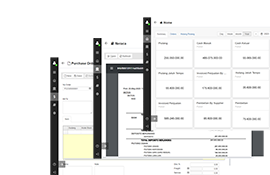Volatility
Table of Contents:
Definition of Volatility
Volatility refers to the degree of variation or fluctuation in the price or value of a financial instrument, asset, or market over a specific period. It quantifies the extent to which prices move up or down from their average, reflecting market uncertainty and potential risks.
High volatility suggests rapid and significant price changes, while low volatility indicates more stable and gradual price movements.
Volatility is a crucial concept in financial markets, impacting investment decisions, risk assessment, and option pricing.
What is Volatility?
Volatility is a measure of how much the prices of financial assets, such as shares, bonds, or commodities, deviate from their average values within a given timeframe. It reflects market sentiment and the degree of uncertainty or risk perceived by investors.
Higher volatility often implies greater market instability and potential for sharp price swings, making investments riskier.
Traders and investors analyze volatility to manage risk, develop strategies, and make informed decisions in various financial markets.
Types of Volatility
Historical Volatility
Calculated using past price data to measure the actual price fluctuations of an asset over a specific period.
Implied Volatility
Derived from options prices, it reflects market expectations of future asset price movements. High implied volatility suggests anticipated market uncertainty.
Realized Volatility
Assesses actual price variations compared to expected ones, often used to validate or adjust volatility forecasts.
Market Volatility
Pertains to the overall fluctuation of financial markets, impacting various assets simultaneously.
Individual Asset Volatility
Measures price fluctuations of a specific financial instrument, like a stock, bond, or commodity, over time.
Sector Volatility
Examines price variability within a specific industry or sector, reflecting broader economic trends.
